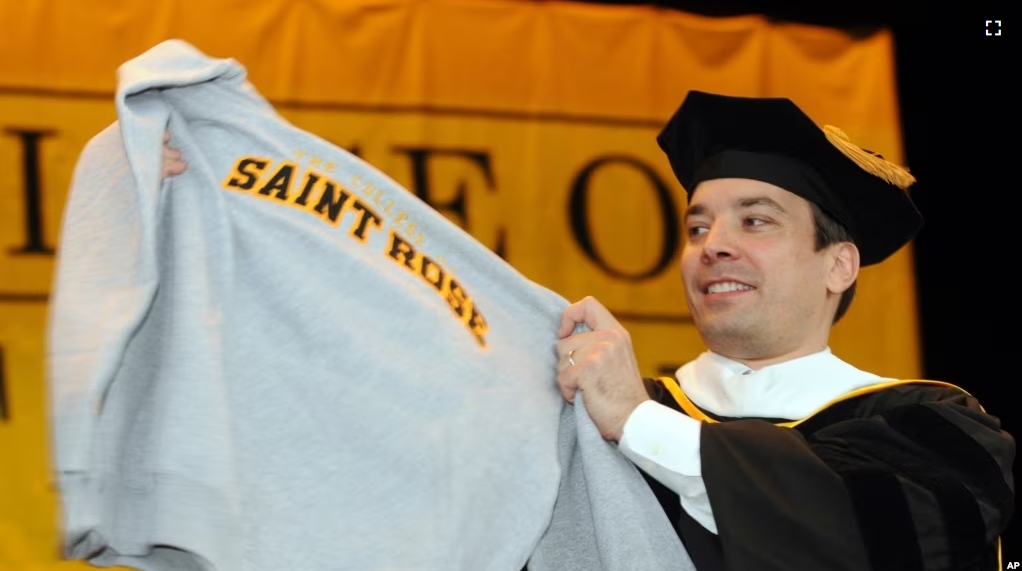American higher education experts are concerned that small colleges closed at a high rate in 2023. They say college closures can prevent students from finishing their study programs and take away some of the country’s unique education offerings.
The website HigherEd Dive notes 26 American colleges and universities either closed or announced their plans to close in 2023. About half that number closed or announced their closing in 2022.
The colleges that closed this year were privately funded and mostly small. They were facing a loss of money and a drop in student numbers. Some schools closed completely, while others combined with nearby schools. Most offered students a chance to finish their study programs or move on to another school nearby.
Although the schools made efforts to assist their students, professors and others who worked at the colleges lost their jobs.
A small college in New York
Alliance University in New York state is one of the schools that closed this year.
The university was started by Christian missionaries in New York City in 1880. It offered mostly religious study programs until the 1960s and 1970s, when it expanded to offer programs in education and business.
At one point, the university had close to 3,000 students. But the publication Inside Higher Ed reports that the number had dropped below 2,000 in recent years.
The school had a budget shortfall of many millions of dollars that it could not make up. After an accreditor reviewed the school’s situation last summer, the university announced its plan to close. An accreditor is a group that permits colleges and universities to operate.
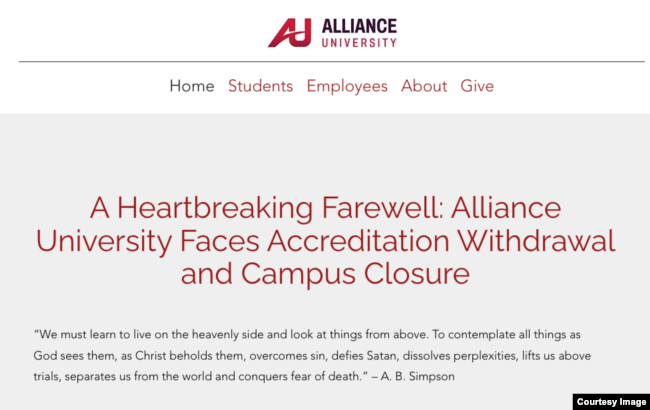
Heather Garcia worked at the school for many years. She also took classes and earned two science degrees there. She said the university asked the accreditor for more time to improve its finances. However, the group decided the school’s plan was not strong enough.
She said the school was going “deeper into debt each year.” Garcia also noted that the student population continued to drop after the start of the COVID-19 pandemic in 2020.
The school knew it was in trouble. It had started new professional training programs in an effort to attract more students. It had also tried to cut spending. But the decision still came as a surprise.
Some students were able to finish their study programs over the summer. But others needed to move to new schools. Garcia said she felt especially bad for new students and for those who had come to play on the school’s sports teams.
The school’s last day was August 31.
Concerns for the future
The State Higher Education Executive Officers Association, or SHEEO, advocates for higher education in the U.S. Last year, the organization produced a report that looked at students affected by college closures. The report covered 467 schools that closed between 2004 and 2020.
The major concern of SHEEO is that students whose studies get interrupted by a closure often do not go on to graduate. More than half of students do not continue with their studies. Among those who do, only about 37 percent finish their degree.
In some cases, students do not get their school fees returned. In other cases, students have trouble getting their school records to send to other universities.
SHEEO’s report asked that states require colleges to help with these concerns if they close, and said colleges should avoid sudden closures.
In 2021, The Hechinger Report noted that students whose schools combine with others also face similar problems.
Observers will be watching what happens with the College of Saint Rose in Albany, New York. The small school recently announced a plan to close in May 2024. An accreditation group said it was concerned about the college’s finances for the 2024-2025 school year.
The school has been losing money since 2013. It lost $11 million in 2020. Cuts to study programs and changes in leadership did not put the school on a better path.
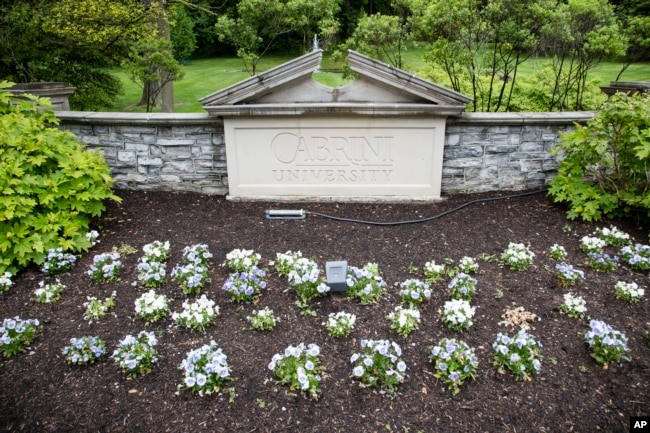
What comes next?
Bryan Alexander is a writer and researcher whose work centers on the future of higher education.
He said the small school closures could lead to a “one-size fits all” style of higher education. That style, he said, may not be suitable for students who have learning troubles or special interests in art, music or language.
Alexander said a government push for Americans to go to college that started in the 1980s, combined with a large population of college-aged young adults, helped many small colleges stay open. But now, he said, the costs of college are high, there are fewer college-aged people, and some people are questioning the value of college.
The first signs that a college is in danger come when there are reductions in study programs and changes “behind the scenes.” Alexander was asked if this year’s high number of closures is cause for alarm in higher education.
“I think, within higher ed, the alarm has already been sounded. Presidents, Deans, Provosts. This is the stuff that keeps them up at nights.”
Alexander noted that the U.S. is unusual when compared to the rest of the world. The country has a lot of small schools with special study programs. He noted Oberlin College in Ohio and Wesleyan University in Connecticut, but there are many more.
In many other countries, universities are generally not smaller than 10,000 students.
“You know, all these little small colleges, and they’re really special. They’re delightful. But they’re fragile. They don’t have economies of scale.”
Economy of scale is a reference to the lower cost of a service per person at a large university when compared to a small college. The cost to provide a study program is much higher per student at a small college.
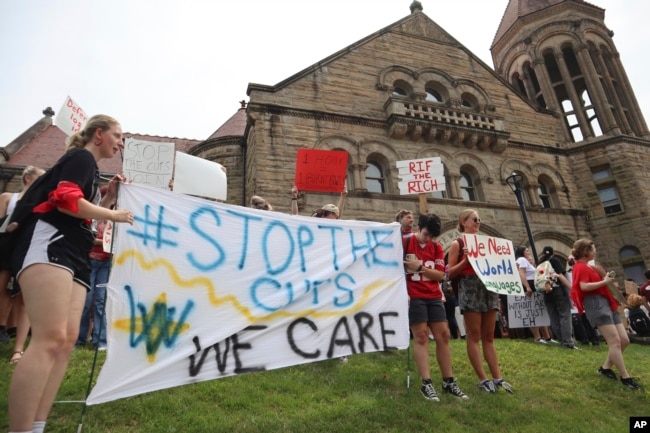
Large American universities with financial problems, such as West Virginia University, are usually able to make changes and continue to stay open. That is because they receive government support.
“State governments don’t want to close the state university,” Alexander said. “When we see that happen, that will be a big deal.”
Garcia, who worked at and attended Alliance, said observers may not see her school closing as a large loss in the same way they would if a famous school closed. But for the people who went to school and worked there, she said: “it is deeply painful.”
“It really just felt special. It felt like we had just this little special niche there in the bottom corner of New York City…and that what we were doing was making an impact on the whole world because we would send, you know, we have alumni all over the world.”
I’m Dan Friedell. And I’m Gena Bennett.
Dan Friedell wrote this story for Learning English.
Quiz – US College Closings Worry Educators
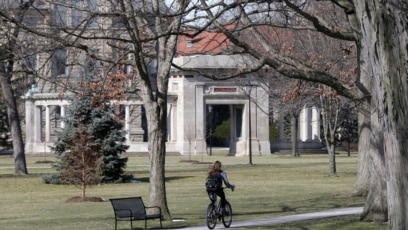
Start the Quiz to find out
____________________________________________________
Words in This Story
unique – adj. something different from everything else
fund – v. to provide money for something
missionary – n. a religious worker who travels to talk about and convert people to their religion
accreditor – n. an organization that checks the credentials of a school and determines if they have permission to operate
especially – adv. a word used to indicate that something deserves extra attention
advocate – n. a person or organization that supports a cause
delightful – adj. a word used to describe something that is special, fun or exciting
fragile – adj. something easily hurt or broken
a big deal – n. something that is very important or hard to believe
niche – n. something that has a unique position, unlike others
missionary – n. a religious worker who travels to talk about and convert people to their religion
alumni – n. (plural) people who attended a school
